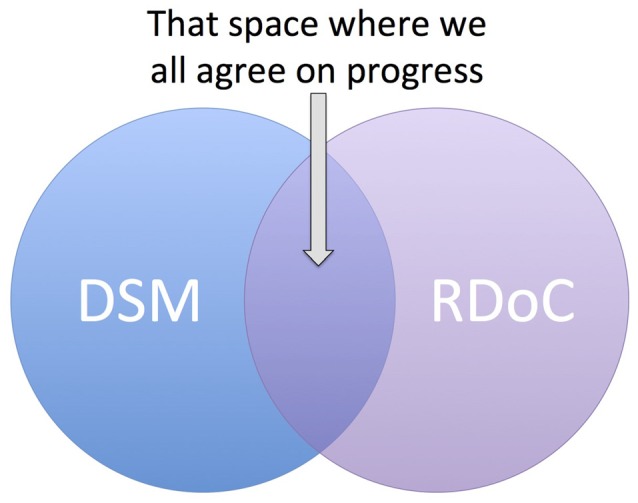Figure 3.

Better together: the practical utility lies somewhere in between. The Diagnostic and Statistical Manual of Mental Disorders (DSM) has received much criticism because its system of descriptive diagnostic nosology does not lend itself to being concretely linked to the circuitry of the brain, which renders the DSM difficult to use as a construct that motivates hypothesis-driven neuroscience research. The Research Domain Criteria (RDoC) framework has suffered from the opposite problem. Namely, it specifies empirically derived domains that are clearly tied to brain circuits, but do not clearly link to disease symptomology as defined by the DSM. Particularly as intermediate phenotypes are better defined in human patient populations and reconciled with circuit-level observations from animal studies, the functionalization of the RDoCs framework can occur and be more accurately mapped onto the symptom-driven DSM nosology to achieve a middle ground that is practically useful by both physicians and researchers.
